
As a community, we have an incredibly rich history and yet we often know so little about it. The first time I learned about the Sikligar community was after watching Mandeep Sethi’s documentary at a local film festival, about this community of Sikhs known to be the weapon makers of the Khalsa army. Unfortunately, very little is known about the Sikligars by those living both within and outside of India and Mandeep’s film will be a first glimpse into the community for many. The Sikligars are found across India – displaced through years of colonization and government oppression. It is known that the community was given the name Sikligar by the 10th Guru of the Sikhs, Guru Gobind Singh Ji and yet even this honor has not prevented the community from struggling – Sikligars now live in extreme poverty in the slums of Rajasthan, Delhi and Agra. There are also encampments in Punjab. Although this community has been largely illiterate for the last 300 years (focusing on their trade and thus livelihood), the Sikligars are beginning to empower themselves through different means such as education. For the first time, the full length documentary is available online! Over the past few months, I’ve joined Mandeep at several film screenings of his documentary and I’ve asked him some questions about SIKLIGAR which you can find after the jump.
Beginning on October 15th, a three-day exhibition was held in Ludhiana to profile a generation of rising young artists in Punjab. The mission according to gallery is ‘to further enrich and diversify cultural life in the Punjab region by facilitating the development of emerging artists.’ The newly constructed gallery in Ludhiana offers exhibition and installation space, leads and collaborates in the development of programs for the visual and performing arts, and will soon be providing an art residency.
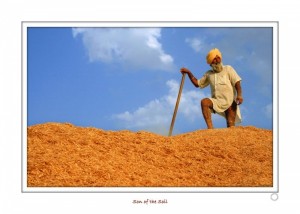 A recent exhibit called ‘Three/One: A Collaborative Art Exhibition in Ludhiana’ was held to showcase the work of Rachna Sidhu, Ankur Singh Patar, and Vivek Pandher, children of some of the most famous literary figures in Punjab. Rachna Sidhu, daughter of the famous thinker and literary critic Amarjit Grewal is a portrait maker at Guru Nanak International public school. Vivek Pandher is the son of the poetic genius Jaswant Zafar, a photographer by profession and a student of film production at UBC. Finally Ankur Singh Patar is son of poetic legend Surjit Patar and focuses on digital art, drawing much of his inspiration from his father’s literary treasures.
A recent exhibit called ‘Three/One: A Collaborative Art Exhibition in Ludhiana’ was held to showcase the work of Rachna Sidhu, Ankur Singh Patar, and Vivek Pandher, children of some of the most famous literary figures in Punjab. Rachna Sidhu, daughter of the famous thinker and literary critic Amarjit Grewal is a portrait maker at Guru Nanak International public school. Vivek Pandher is the son of the poetic genius Jaswant Zafar, a photographer by profession and a student of film production at UBC. Finally Ankur Singh Patar is son of poetic legend Surjit Patar and focuses on digital art, drawing much of his inspiration from his father’s literary treasures.
Guest blogged by santokh
A couple days ago I was reading some news articles on Hondh Chillar and Pataudi. Some of these articles include photographs from the two big events that took place at Hondh Chillar–clean up of the destroyed gurdwara building and Akhand Paath that took place thereafter in that building. I was talking to a couple friends about what all of this means for us as Sikhs, as youth with a vested interested in all things Punjab but separated from it by distance, and as a generation that, despite a fascination and infatuation with Punjab and Sikhi, seems disconnected to the memory of 1984 in many ways.
I was born a year after Operation Bluestar, no one from my family or relatives were directly affected by the genocide, my grandparents didn’t live close to New Delhi, Amritsar, or any of the other affected areas–Hondh Chillar and Pataudi, for example. As I was talking with my friends, I realized our awareness of Bluestar comes from websites, media, press releases by advocacy groups, a few books and essays, and the occasional speech at gurdwara or elsewhere almost as an annual ritual in June and November. It’s almost a kind of dynamic I can chart out–come the first week of June and November, emotions run high and my inbox is filled with invites to a number of vigils and memorials.
If I view the memory of Bluestar from the perspective of a generation before mine, everything changes. Many of my friends’ parents and grandparents were directly affected in 1984 as victims and/or witnesses. They have a direct connection to and memory of Bluestar. They know what media channels did and did not report, each of them is a walking memorial in a sense.
Guest blogged by Preserve Architectural Heritage
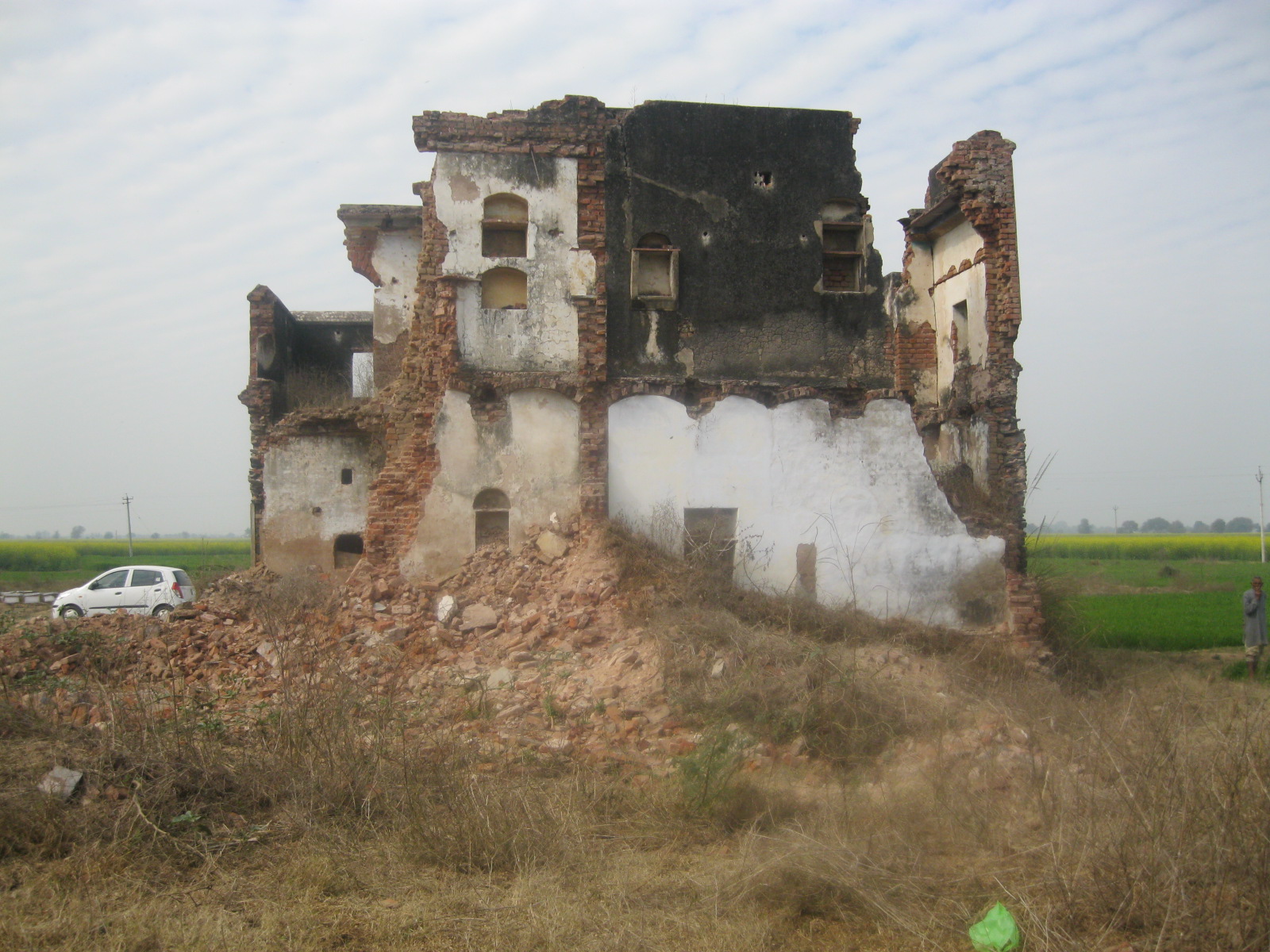 What: discovery of two sites linked to 1984: (1) Hondh Chillar, discovered January 2011. (2) Pataudi, discovered Februrary 2011. Both are in Haryana. Excerpts from Press Releases from Sikhs for Justice reveal that 32 men, women, and children were brutally tortured and killed in Hondh Chillar and 17 in Pataudi.
What: discovery of two sites linked to 1984: (1) Hondh Chillar, discovered January 2011. (2) Pataudi, discovered Februrary 2011. Both are in Haryana. Excerpts from Press Releases from Sikhs for Justice reveal that 32 men, women, and children were brutally tortured and killed in Hondh Chillar and 17 in Pataudi.
Why is this discovery important: So far all the investigation into the violence of 1984 has been done via interviews, eyewitness accounts, judicial commissions, and lawsuits. For the first time, we have living evidence of the genocide: the buildings speak for themselves. Though there are thousands of names on the ever-growing list of those killed in 1984, many of us have very little connection to those names since we don’t personally know the families. Even if some of us know or are related to survivors of the violence, it’s difficult and painful to have those individuals recollect and narrate their memories and experience.
Those of us with no familial connection to Operation Bluestar, those of us who were too young to remember, or were not born when this genocide tookplace now have a physical, tangible, alive, and direct relationship to this significant period of Sikh history through these sites. Since memory of any tragic event is intrinsically linked to physical location[s], it is absolutely crucial that we realize the value of Hondh Chillar and Pataudi as sites that provide us with a direct link to the memory of 1984. They are living sites, open for everyone to access and connect with. They are silent victims, that, just like the human victims of 1984, represent a crucial moment from the recent Sikh past.
On a recent visit to Amritsar, one of the topics of interest was the newly approved plan by Chief Minister Badal for the revamping of the entrance to the Darbar Sahib. The plan includes a “state-of-art” restructuring of the entrance plaza.
According to one article, the new entrance would address accessibility for pedestrians and eco sustainability. It was also noted in this article that a timeline for completion and budget for this project has not been planned.
While the Panjab government is clearly looking to increase their tourism value, it was made clear to me that many Panjabis are not huge supporters of a project that will change the existing architecture around the Darbar Sahib. There is a strong sentiment that religious buildings should be treated as such, rather than as tourist spots.
The Darbar Sahib complex does rely on funds to ensure sustainability but with plans to enhance the Darbar Sahib with tourism in mind, the Panjab government will be treading a fine line to make sure that the holiest of places for Sikhs does not become impacted by visitors. Nevertheless, the Darbar Sahib is not the first place to be affected by increased tourism. Other “wonders” around the world are also working to address how to balance the sustainability of history with the growing inquisition of visitors.
What do you think? Should the Darbar Sahib be redesigned with tourism in mind or should efforts be made to keep the area intact as an important religious place?
I have noticed these past couple of weeks that discussions about the value of Punjabi have become more prevalent. The issue of maintaining our “ma boli” is constantly on our minds and manifests in our everyday lives. However, with the onset of many Vaisakhi melas, Nagar Kirtans, and of course Satinder Sartaj concerts the discussions are heightened.
Recently, on Jus Punjabi’s “Aaj Da Mudda” show, there was an insightful conversation about pronunciation and the longevity of Punjabi. The host and guest discussed how East Punjabi’s pronunciation of words have changed (we are taking the easier route). Despite this change in pronunciation, the guest highlighted how Punjabi has survived the most turbulent of times (e.g. the state language during Maharaja Ranjit Singh’s rule was Farsi and the 1960’s division of India Punjab).
As he spoke, I was reminded of Gurdas Mann’s song “Punjabiye Zubane” (listen below). This song captures how the strength of the Punjabi language was developed over time. It is this strength that has allowed it to survive. I am left wondering if we 1) have the will and 2) the capacity to nurture and love this language like others have done in the past. Can we help nurture the strength of Punjabi in today’s context? What do you think?

This week, the Wall Street Journal highlighted India’s decision to change some of its agricultural policies, in response to its 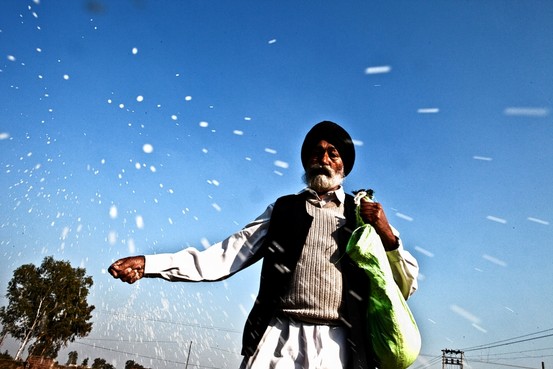 post-Green Revolution crisis. (Hat tip: Bandana)
post-Green Revolution crisis. (Hat tip: Bandana)
In the 1970s, India dramatically increased food production, finally allowing this giant country to feed itself. But government efforts to continue that miracle by encouraging farmers to use fertilizers have backfired, forcing the country to expand its reliance on imported food. [WSJ]
Kamaljit Singh, a 55 year old from Marauli Kalan in Punjab, explained:
He says farmers feel stuck. “The soil health is deteriorating, but we don’t know how to make it better,” he says. “As the fertility of the soil is declining, more fertilizer is required.” [WSJ]
Behind the worsening health of the soil is India’s agricultural policy. In it’s effort to boost food production, win farmer votes and encourage the domestic fertilizer industry, the government increased its subsidy of urea over the years, and now pays about half of the domestic industry’s cost of production.
How can Punjabi traditions, environmental awareness, and women’s space all be nurtured at the same time? Trinjan. Two organizations in Punjab recently teamed up to begin this. The Kheti Virasat Mission (KVM), 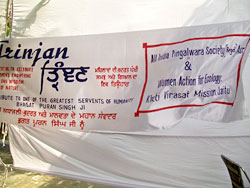 working towards sustainable agriculture, conservation of natural resources, environmental health and eco-sustainable technologies teamed up with Pingalwara, the org started by Bhagat Puran Singh in Amritsar as a refuge to care for those who had nowhere left to go. [Hat tip: Big B!]
working towards sustainable agriculture, conservation of natural resources, environmental health and eco-sustainable technologies teamed up with Pingalwara, the org started by Bhagat Puran Singh in Amritsar as a refuge to care for those who had nowhere left to go. [Hat tip: Big B!]
These two groups combined efforts to revive the lost tradition of Trinjan. KVM created a new initiative- the Women Action for Ecology to encourage women’s participation in an agro-ecological revival movement in Punjab.
From pictures on Pingalwara’s site, it seems that Pingalwara may have envisioned this first attempt at reviving Trinjan to be more a display of Punjabi traditions- natural foods, arts, and crafts. However a report from KVM envisions a much more active and central role for women in reviving Trinjan.
Since women are the first and worst victims of the agro-ecological crisis here and elsewhere, women need to work towards the mitigation process, for their own sake and for the sake of the community. Trinjan is an effort to mobilize women to appreciate their own traditional wisdom and role in the preservation and conservation of the environment in Punjab. Platforms for sharing of knowledge and spreading of practice are the main tool for empowerment of women in Trinjan. (emphasis added) [KVM report]
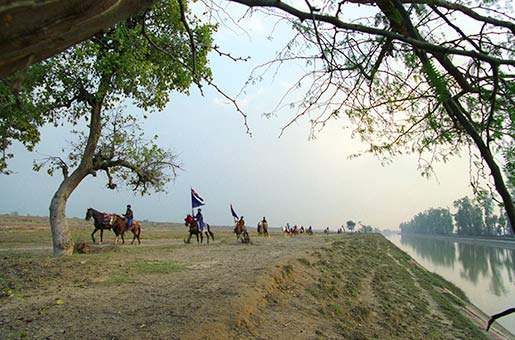 Environmental issues have taken a backseat for way too long. Even under this administration – which promised to create jobs through new and clean energy initiatives, and rejoin the international community to reduce worldwide carbon emissions – environmental issues have taken a backseat to health care overhaul and reviving our frail economy.
Environmental issues have taken a backseat for way too long. Even under this administration – which promised to create jobs through new and clean energy initiatives, and rejoin the international community to reduce worldwide carbon emissions – environmental issues have taken a backseat to health care overhaul and reviving our frail economy.
Crisis
We should be especially concerned because the consequences of misusing resources are all too clear in the near-crisis state that Punjab’s ecology is currently in. Those who still have relatives in Punjab know that this past summer, electricity outages were a daily occurrence and lasted 8 hours at a time – the worst in many years. These shortages in electricity occur because the government subsidizes electricity for farmers so that it’s free or nearly so and they can pump water for irrigation to their heart’s content. However, this leads to electricity shortages, overuse of waterpumps, and water wastage. [Forbes-India]
An article in Forbes-India asked yesterday, “Is India running out of water?” For Punjab, the answer is yes.
And Punjab, as the breadbasket of the most populous nation in the world, may be an indicator of other similarly situated agricultural communities.
 When hallowed grounds make way for fairway greens, you have a lens into contemporary elite culture in Punjab. Tales of the loss of our historical materials and architecture form a common topic here in The Langar Hall as throughout conversations of Sikhdom. Destruction of historic Gurdwaras for the vanilla blandness of marble monstrosities is well known.
When hallowed grounds make way for fairway greens, you have a lens into contemporary elite culture in Punjab. Tales of the loss of our historical materials and architecture form a common topic here in The Langar Hall as throughout conversations of Sikhdom. Destruction of historic Gurdwaras for the vanilla blandness of marble monstrosities is well known.
Although I am hardly a fan of the Times of India, a recent article did get me to think.
The article describes a hallowed space that will soon become a golfing green. The history of that space is as follows:
Barely 20 km away from Chandigarh, off Kharar-Landran road, lies Chhappar-Chiri village — once known for its plentiful ponds and mangroves on the banks of Patiala Ki Rao — where in 1710, the brave Banda Singh, anointed general of the Khalsa army by Guru Gobind Singh and sent to stop the tyranny of Mughals, defeated the army of Wazir Khan, the subedar of Sirhind who had ordered the killing of Sahibzada Zoravar Singh and Fateh Singh by bricking them alive. Khan was put to death and his body dragged to Sirhind, about 25 km from the village, before the Khalsa army proceeded to decimate the town.[link]
 The issue of the loss of Sikh heritage sites and documents has long been lamented by many Sikhs. In fact, one of my fellow langa(w)riters blogged about the need to ‘preserve what history we have left.’ One group has been silently seeking to remedy this problem – the Nanakshahi Trust.
The issue of the loss of Sikh heritage sites and documents has long been lamented by many Sikhs. In fact, one of my fellow langa(w)riters blogged about the need to ‘preserve what history we have left.’ One group has been silently seeking to remedy this problem – the Nanakshahi Trust.
Quietly working on a massive project for over the past 6 years, the Nanakshahi Trust, along with the Sikh Research Institute, have inaugurated the Panjabi Digital Library:
For the first time ever a searchable collection of millions of rare pages on the Sikhs and the region of Panjab has been made available. Panjab Digital Library (PDL) will include texts of manuscripts, books, magazines, newspapers and photographs and will be available to anyone with Internet access at www.PanjabDigiLib.org. This launch was made possible in part by The Nanakshahi Trust and the Sikh Research Institute (SikhRI).
In today’s society, digitization is the key to immortality. While Sikhs have to be equally wary of those that claim Sikhs have no history as well as those that come up with their own ludicrous interpretations, a project such as the Panjab Digital Library allows Sikhs to access their own primary and secondary sources. Nanakshahi Trust has done a tremendous boon to Sikhs, researchers, and all that are interested in the preservation of history and man (and woman’s) historical past.
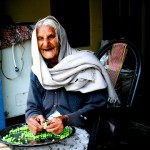 Often times the elderly are considered “high-cost” because they take money out of American system. They are seen as a “liability” because they withdraw medicare and social security benefits. Foriegn elders are similarly viewed as a group that “takes” through government benefits, but is not expected to serve the American system for very long.
Often times the elderly are considered “high-cost” because they take money out of American system. They are seen as a “liability” because they withdraw medicare and social security benefits. Foriegn elders are similarly viewed as a group that “takes” through government benefits, but is not expected to serve the American system for very long.
However, in a recent study at the Center for Intergenerational Learning at Temple University, scholars found that “older immigrants are not inert drains in the U.S. system but an invisible force of community contributors in the United States”.
The study found that immigrant elders contribute to community cohesion by playing leadership roles in families. Also, their sense of interconnectness, rooted in religious and cultural values, forces them to look out for the collective good. They are also a good source for motivating the younger generation to support community members.
 Gatka is becoming popular amongst Sikhs and non-Sikhs in the West. Raveena writes that this resurgence in the Toronto area is primarily because of The Annual International Yudh Gatka Tournament that originated in Toronto in 2003. This year the tournament is being held in New Jersey. The Toronto leg of the tournament will on August 23rd the Rexdale Gurdwara Sahib. You can find out more information at Yudh.net.
Gatka is becoming popular amongst Sikhs and non-Sikhs in the West. Raveena writes that this resurgence in the Toronto area is primarily because of The Annual International Yudh Gatka Tournament that originated in Toronto in 2003. This year the tournament is being held in New Jersey. The Toronto leg of the tournament will on August 23rd the Rexdale Gurdwara Sahib. You can find out more information at Yudh.net.
Why is Gatka becoming so popular? Yudh.net writes that, “Not only does Gatka emphasize the physical training of martial arts, but it puts a special focus on ‘mental’ training which is needed to be successful in any sport”. Thus, this traditional Sikh martial arts from the early 17th century is a place to relieve stress, heighten awareness, but also learn sportsmanship and respect-for both people and weapons.
For those of you who attend the Tournament, please let us know how it goes.
Punjab has been divided numerous times. Both during and after partition. Anita Rau Badami eloquently writes, “First it was Partition and half our land disappeared. Now our own leaders are chopping it up like a piece of meat”. The Punjabi language was one thing we hoped would cross borders despite all the “chopping”. Ultimately, it was the language of the Punjabi soul regardless of how political borders were drawn.
However, the Punjabi language is being lost. It has been granted “second language status” under the Official Language Act. Although extremely disappointing that Punjabi is given a 2nd status-one walks away thinking at least it still has some official status. However, Punjabis’ actions are speaking louder than our words when Punjabi is virtually not being taught in schools or used in official administrative work in Chandigarh. This abandonment is occurring despite the availability of financial assistance from the Central Government government to hire Punjabi language teachers. This financial assistance is supposed to cover the entire financial costs of language teachers’ appointments and salaries.
Prabhjot Singh writes for “The Tribune” that the Human Resource Development Minister Kapil Sibal (a Punjabi himself) stated:
None of the northern states other than Himachal Pradesh had applied for financial assistance for the appointment of Punjabi teachers during the past three years. Only Himachal Pradesh had obtained a grant in October 2007 for the appointment of 100 Punjabi teachers.
Gatka owes its early development to the Shaster Vidiya, literally meaning knowledge of the arms. This was a warrior curriculum used by the Sikhs for military training. [link]
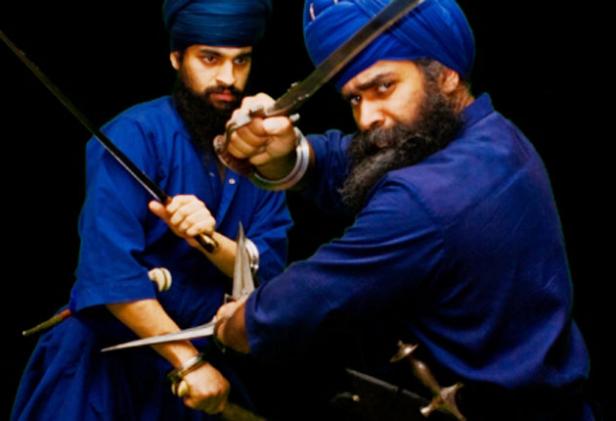 A fascinating article in a UK newspaper highlights the return of Shaster Vidiya – the “world’s original martial art” which was banned by the Raj after the final defeat of the Sikh empire in the mid-19th century. Considered a forgotten art form, Shastar Vidiya was practiced in North India before the emergence of Sikhism. However, it was the Sikhs who were known to have fully mastered this particular fighting style.
A fascinating article in a UK newspaper highlights the return of Shaster Vidiya – the “world’s original martial art” which was banned by the Raj after the final defeat of the Sikh empire in the mid-19th century. Considered a forgotten art form, Shastar Vidiya was practiced in North India before the emergence of Sikhism. However, it was the Sikhs who were known to have fully mastered this particular fighting style.
Now, it seems, young British Sikhs are attempting to revive this lost art form. Their teacher, a controversial figure named Nidar Singh Nihang, has been studying the art of Shastar Vidiya for the past 20 years in hopes of passing it onto the younger generation. Students begin learning how to fight with simple wooden sticks. However, those who show a particular skill and dedication are allowed to practice with the kind of swords that once made the Sikh armies so powerful. The article points out the irony of a British Sikh trying to resurrect shastar vidiya given the history,
As I was randomly going through youtube clips a few days ago, I came across the above video of a group of Sikh children in Fremont, who learn kirtan in classical raags. Despite the poor audio, its obvious that they are good and I know this also from having heard them (and some of their contemporaries) in person – they are GOOD.
A couple of weeks ago Jodha reported on an article that brought to light the fact that Sikh children are practicing the tradition of kirtan, but what I think we didn’t discuss there is how this generation of Sikh musicians has really become one of classical musicians, learning stringed instruments of old and performing keertan in the Classical or raag framework. The growth has been obvious, especially in recent years – with the rise of institutions such as the The Raj Academy in Great Britain and the Gurmat Sangeet Department at Punjabi University Patiala, which specialize in providing instruction in traditional (classical) kirtan, and even the Miri Piri Academy in Amritsar of which the Chardi Kala Jatha (classically trained professional Sikh musicians who happen to be American in nationality) is a product.
As the 25th anniversary of “1984” approaches us, TLH posts have covered some activities commemorating this devastating time in our history.
My most vivid memories of “1984” are watching Indira Gandhi’s funeral on television and the border of photos inside my local Gurdwara’s Langar Hall of the men who had been tortuously killed during the Khalistani movement. As I got older, I always wondered how Sikh women were impacted by these events, aside from the infamous photo of a widow crying with her child in her arms.
I read about a woman who was strongly involved in the Sikh student movement in Punjab but now lived on the East Coast (USA). At the Fremont Gurdwara, I remember the single picture of a woman who helped make the border of Shaheeds’ photos hung high in the Langar Hall. I recall the emotional testimonies of widows left deserted by our community and the Indian government in the film, “Widow Colony”. Most recently, I came across this poem, “Don’t Feel Sorry For Me, I Am The Daughter Of A Shaheed” written by woman who lost her family in the 1984 riots in Delhi.
In a significant development, the Government of Iraq has decided to rebuild the 15th century Sikh Guru Guru Nanak Dev’s shrine which was destroyed in the 2003 war in Baghdad. [link]
 Guru Nanak Dev Ji is said to have visited the place on his way back from Mecca where he stopped to speak with religious leaders including the caretaker of the mausoleums of Abdul Qadir gilani and Bahlol the Wise, who were greatly impressed by his views on God and religion. A monument, in the form of a platform, was raised where Guru Nanak had sat and provided these discourses. It is documented that Sikh soldiers who went to Iraq during the First World War, 1914-18, raised a Gurdwara here, but now only a room exists which is visited by Sikh and non-Sikh Punjabis who work in Iraq. In addition, it is noted that since the gurdwara is located within a graveyard, visitors are banned from staying overnight, cooking meals or holding Langar and Kirtan. I was not able to locate any information regarding who is currently in charge of the gurdwara or what the dynamics of the gurdwara are (without Langar or Kirtan). I do wonder if a Guru Granth Sahib is kept there and, in that case, who does the seva.
Guru Nanak Dev Ji is said to have visited the place on his way back from Mecca where he stopped to speak with religious leaders including the caretaker of the mausoleums of Abdul Qadir gilani and Bahlol the Wise, who were greatly impressed by his views on God and religion. A monument, in the form of a platform, was raised where Guru Nanak had sat and provided these discourses. It is documented that Sikh soldiers who went to Iraq during the First World War, 1914-18, raised a Gurdwara here, but now only a room exists which is visited by Sikh and non-Sikh Punjabis who work in Iraq. In addition, it is noted that since the gurdwara is located within a graveyard, visitors are banned from staying overnight, cooking meals or holding Langar and Kirtan. I was not able to locate any information regarding who is currently in charge of the gurdwara or what the dynamics of the gurdwara are (without Langar or Kirtan). I do wonder if a Guru Granth Sahib is kept there and, in that case, who does the seva.
 My Nana Ji (maternal grandfather) often says: “Ja savair da bhulia, shaam noo ghar muriavye, ta oh nu bhulia nehee keheeda”. That if one is lost in the morning, but finds his way home by evening, he’s no longer lost. Hopefully that’s the case with Sikhs and their preservation of history and architecture.
My Nana Ji (maternal grandfather) often says: “Ja savair da bhulia, shaam noo ghar muriavye, ta oh nu bhulia nehee keheeda”. That if one is lost in the morning, but finds his way home by evening, he’s no longer lost. Hopefully that’s the case with Sikhs and their preservation of history and architecture.
Over the years, well-intentioned but individuals kar sewa babas took on the responsibility for the renovation and expansion of Sikh religious institutions across South Asia. Unfortunately, in almost every case, they lacked any expertise in preservation and caused way more harm then good. The result has been, literally, a whitewashing of Gurdwaras. With an “out with the old and in with the new” attitude, old historical structures have been torn down, modified beyond recognition and historical paintings and frescos have been painted or tiled over.
For me the most shocking example of this came from the Baba Atal tower in Amritsar, where hideous green bathroom tiles (that no self-respecting homeowner would ever use) were installed over top of century-old paintings. Here is pic that were sent my way a few years back.
Thankfully, someone has woken up to the fact that bathroom décor isn’t the best way to preserve our history for future generations.
The heritage experts engaged by the SGPC and the district administration have found priceless frescoes from the first floor of Baba Atal, the tallest building of Amritsar, hidden under bathroom tiles put up by Sikh Babas during previous kar sewa.
The art work is exquisite. Most of the art work, hidden during the kar sewa can be retrieved though it requires extra care and expertise. The experts are careful that further damage is not caused while removing marble or bathroom tiles.
Earlier, the SGPC had entrusted kar sewa to the Sikh Babas who had “destroyed” the Sikh heritage, much to the chagrin of experts. Deputy commissioner Kahan Singh Pannu today held a meeting with experts in the Golden Temple complex after monitoring the restoration work of Baba Atal and Ramgarhia Bungas.
Earlier, the kar sewa, carried out to repair age-old murals at Gurdwara Baba Atal, had earned flak from heritage lovers. Interior walls of the first floor were adorned with murals depicting Sikh history. About 100 panels of murals had been left on the first floor of the gurdwara, while the rest of them had been destroyed beyond recognition. Link
This is an area where the Sikh diaspora can have a direct impact. Most kar sewa efforts are highly dependent on dollars and pounds coming in from abroad. Before giving from your dasvand to these causes, please make sure and find out what the project is actually doing. The last thing anyone wants to further devastate the little physical we have left.


